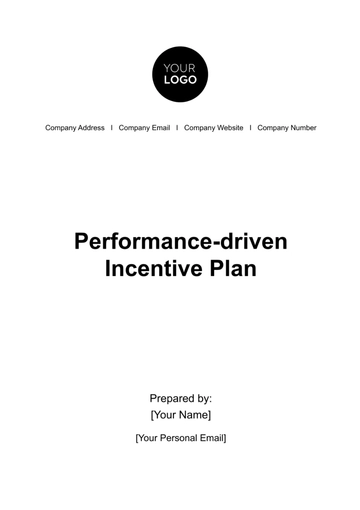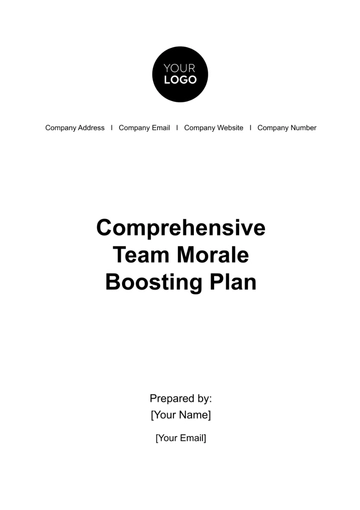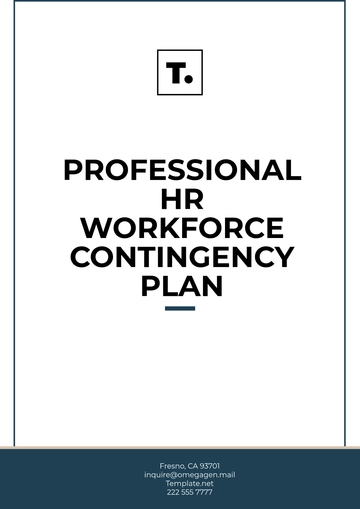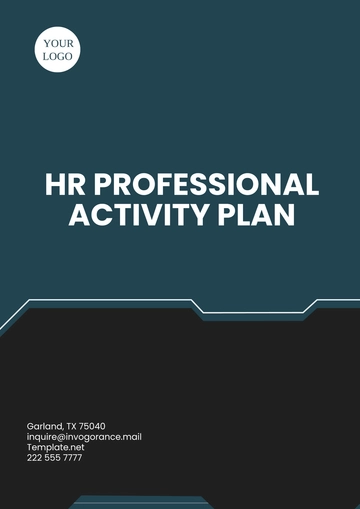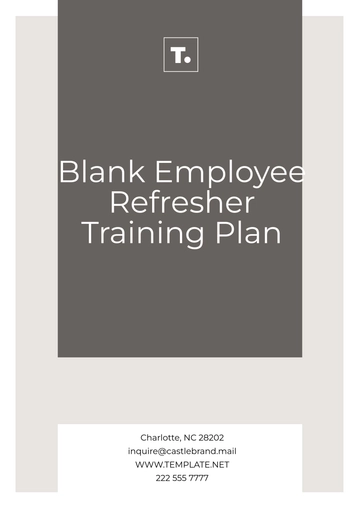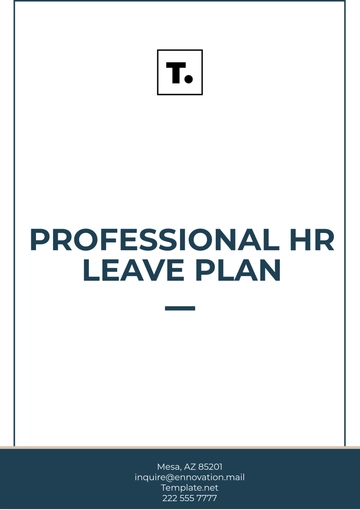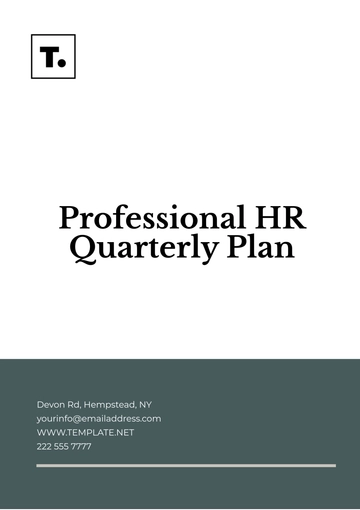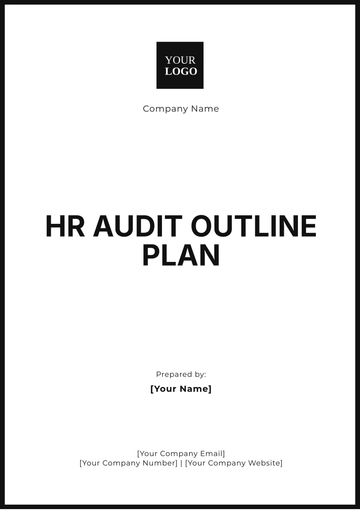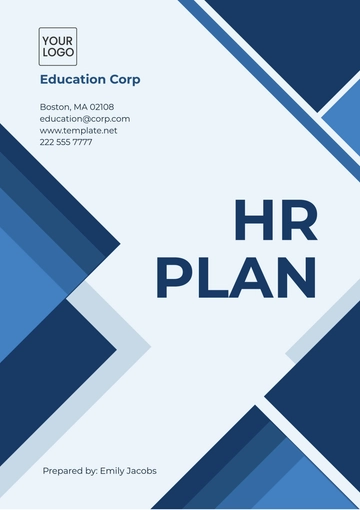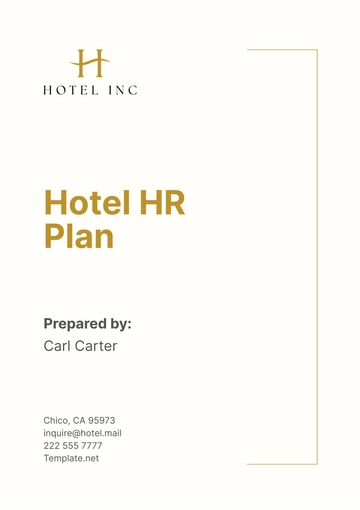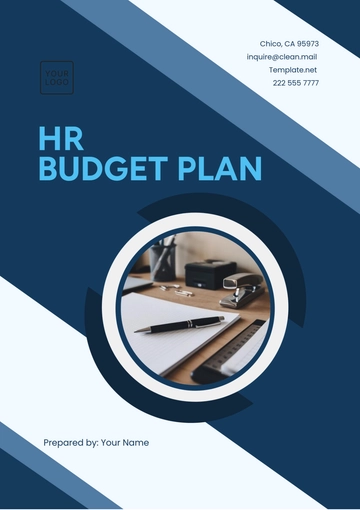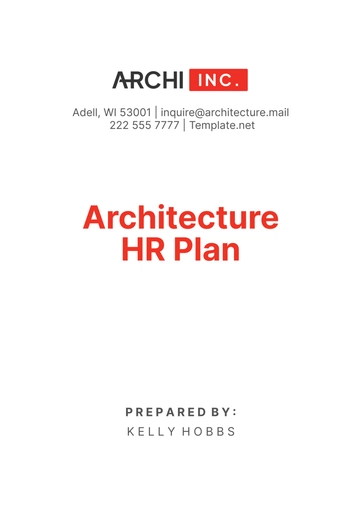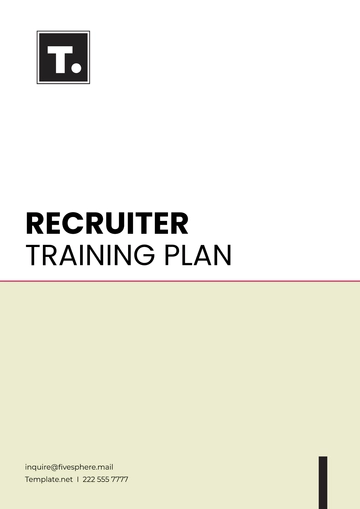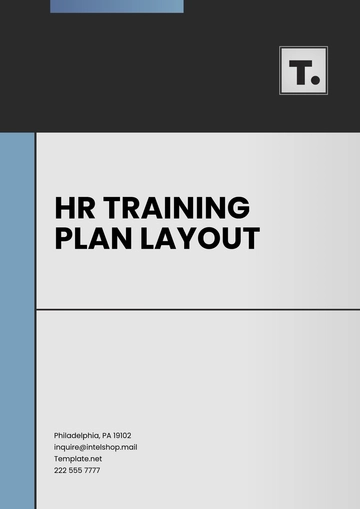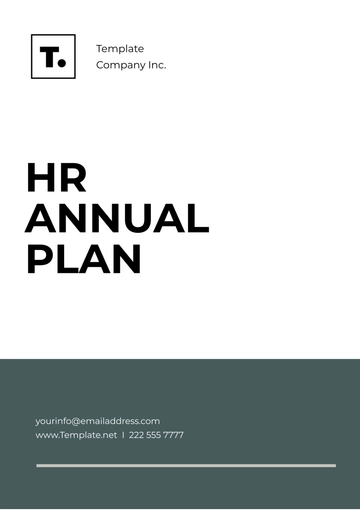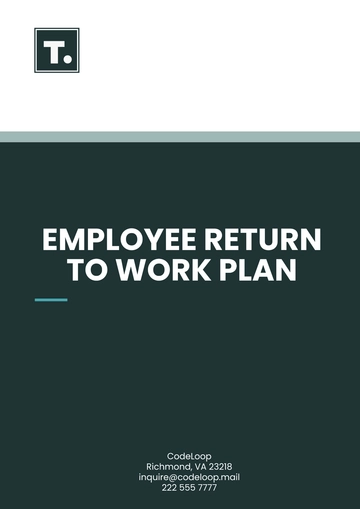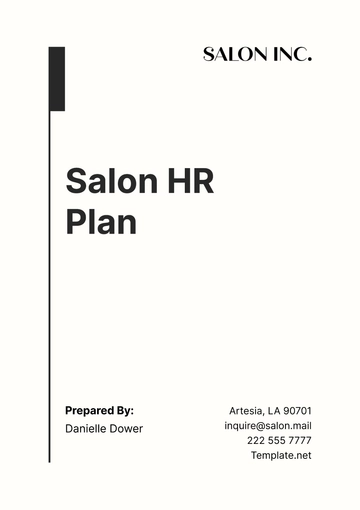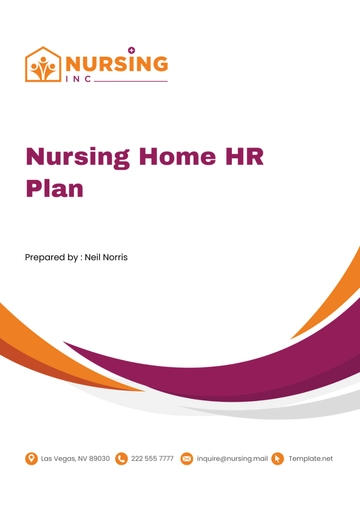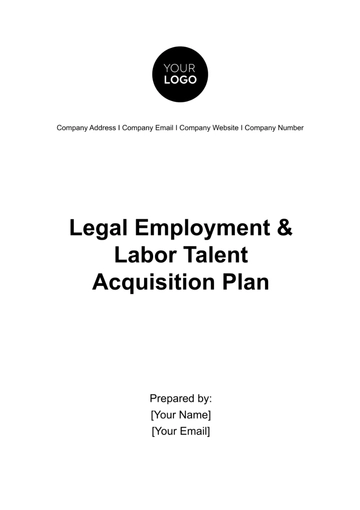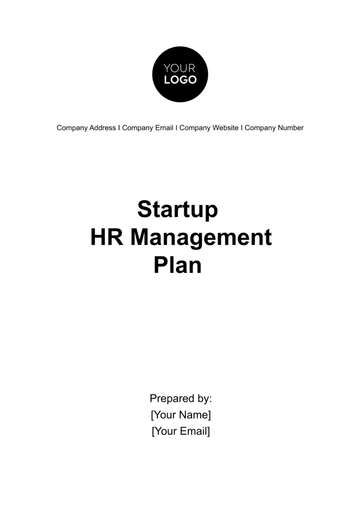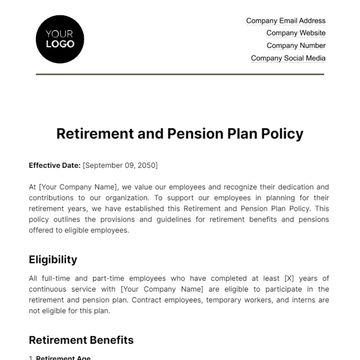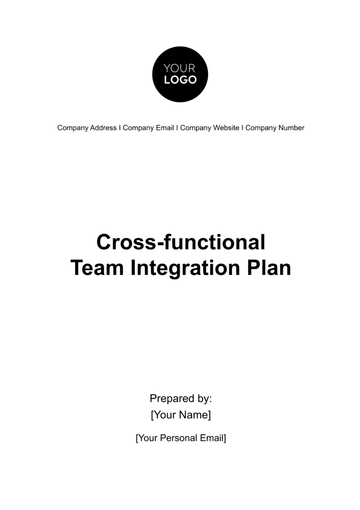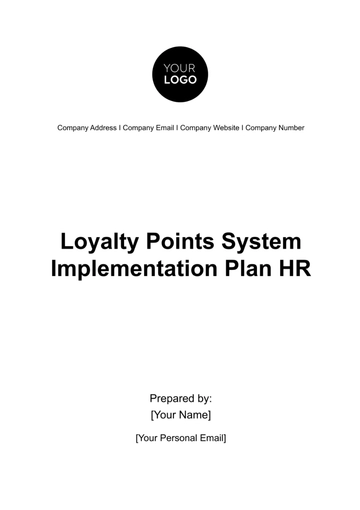Free Diversity and Inclusion Stakeholder Engagement Plan HR
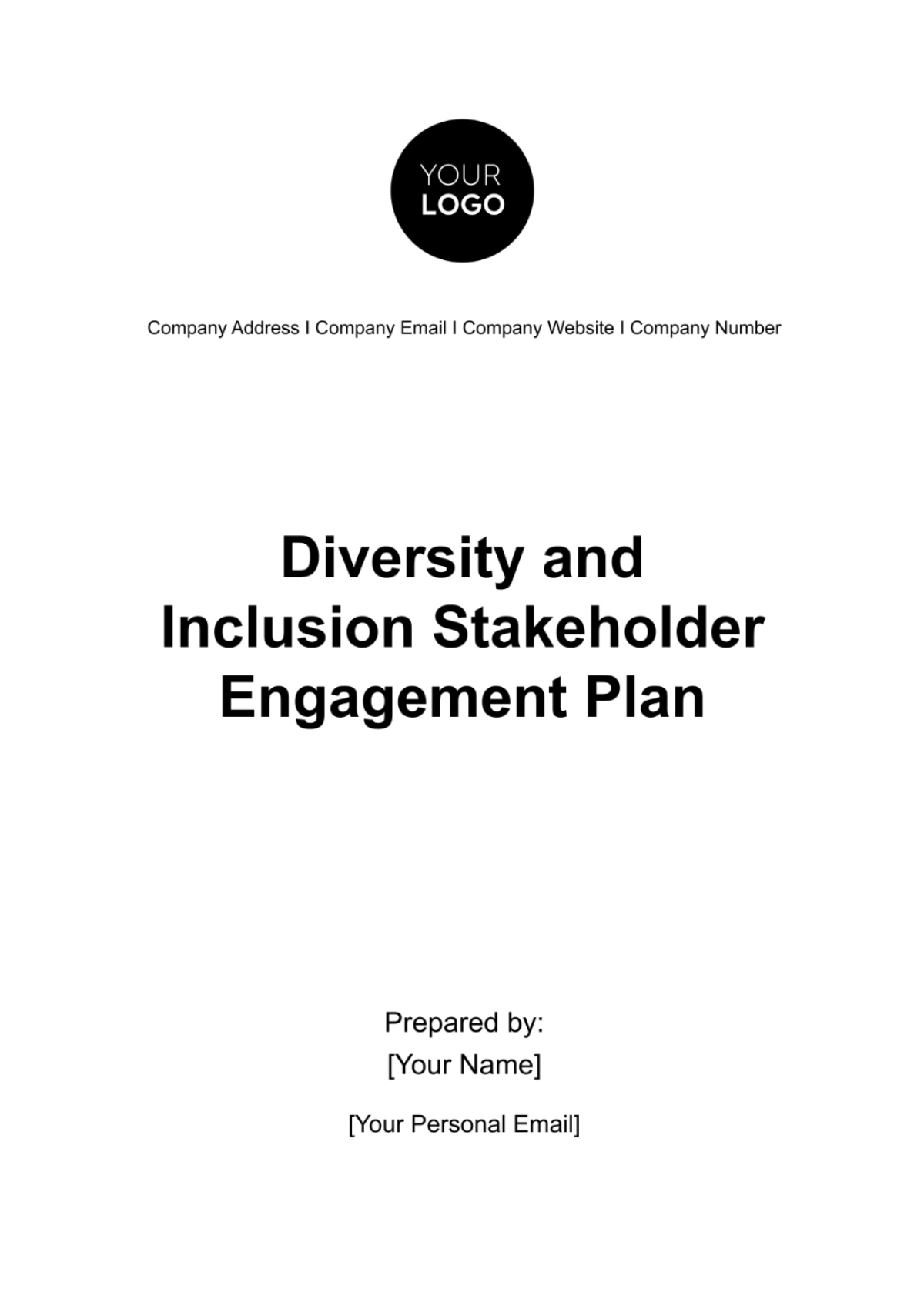
Background
In today's diverse and interconnected world, fostering a culture of diversity, equity, and inclusion (D&I) is essential not only for ethical reasons but also for organizational success. Our organization recognizes the significance of D&I and is committed to creating a workplace where every individual is valued, regardless of their background or identity. To achieve this, we understand that engaging our stakeholders is a fundamental aspect of our D&I strategy.
Purpose
The purpose of this Diversity and Inclusion Stakeholder Engagement Plan is to provide a structured approach for effectively involving various stakeholders in our D&I initiatives. By engaging stakeholders both within and outside the organization, we aim to create a more inclusive workplace culture and make a positive impact on the communities we serve.
Scope
This plan covers all aspects of stakeholder engagement related to D&I, including the identification of stakeholders, strategies for engagement, communication plans, and methods for feedback collection and evaluation. It serves as a guiding document for our D&I department and all employees involved in D&I efforts.
Objectives
Promoting D&I Awareness: One of our primary objectives is to increase awareness of D&I principles among all stakeholders. By ensuring that our stakeholders understand the importance of D&I, we create a more supportive environment for our initiatives.
Seeking Input and Feedback: We believe that involving stakeholders in the decision-making process is essential. We aim to solicit input and feedback from stakeholders on our D&I initiatives, as their perspectives are invaluable in shaping our strategies.
Collaborative Partnerships: Collaboration is at the core of our D&I efforts. We seek to establish collaborative partnerships with stakeholders to harness collective knowledge, resources, and expertise to advance our D&I goals.
Transparency: Transparency is a key tenet of our D&I initiatives. We are committed to providing stakeholders with clear and honest information about our D&I progress, challenges, and successes.
Stakeholder Identification
Internal Stakeholders
Employees: Our most vital internal stakeholders are our employees. They represent diverse backgrounds, experiences, and perspectives, making their active engagement crucial to our D&I efforts.
Leadership and Executives: Senior management and executives play a pivotal role in setting the tone for our organization's D&I culture. Their engagement is essential to align our strategic objectives with our commitment to diversity and inclusion.
Employee Resource Groups (ERGs): ERGs and affinity groups represent various segments of our workforce. Their active involvement in D&I initiatives not only enhances our workplace culture but also creates a supportive network for underrepresented employees.
Managers and Supervisors: Managers and supervisors are the bridge between our D&I department and employees. Their understanding and support of our D&I initiatives are key to their successful implementation at the team level.
HR Department: HR professionals are instrumental in implementing policies and practices that support our D&I goals. Their engagement ensures that D&I is embedded in all HR processes.
Diversity and Inclusion Committees: Our D&I committees are dedicated to driving our D&I initiatives forward. Committee members actively shape our strategies and initiatives.
External Stakeholders
Customers/Clients: Our customers and clients represent a diverse group of individuals and organizations. Engaging with them helps us understand their needs and values regarding D&I in our products and services.
Suppliers and Business Partners: Our relationships with suppliers and business partners provide opportunities to extend our commitment to D&I beyond our organization. Engaging with them promotes supplier diversity and inclusion.
Community Organizations: Community organizations are valuable allies in our D&I efforts. Partnering with them allows us to tap into local expertise and engage with diverse communities.
Regulatory Bodies: Compliance with D&I regulations is not only a legal requirement but also an ethical commitment. Engaging with regulatory bodies ensures that we stay aligned with D&I standards and expectations.
Industry Peers: Collaboration with industry peers allows us to benchmark our D&I progress, share best practices, and learn from the experiences of others in our sector.
Media and Public: Engaging with the media and the public helps us share our D&I initiatives and achievements, contributing to our reputation as a socially responsible organization.
Stakeholder Engagement Strategies
Internal Stakeholder Engagement
Training and Workshops: To promote D&I awareness, we will conduct regular training sessions and workshops for all employees. These sessions will cover topics such as unconscious bias, cultural sensitivity, and inclusive leadership.
Feedback Channels: We recognize that feedback is a two-way street. We will establish clear channels for employees to provide input and feedback on our D&I initiatives, ensuring that their voices are heard.
ERG Involvement: ERGs will play a central role in executing our D&I initiatives. We will collaborate closely with ERGs to co-create programs, events, and resources that align with their members' needs and interests.
Leadership Commitment: Our senior leaders will lead by example, actively participating in D&I programs, setting expectations for managers, and publicly championing our D&I values.
External Stakeholder Engagement
Customer Surveys: To understand our customers' perceptions of our D&I efforts, we will implement regular surveys, seeking their feedback and suggestions for improvement.
Supplier Diversity Programs: We will actively promote supplier diversity, engaging with diverse suppliers and encouraging our business partners to adopt similar practices.
Community Partnerships: We will form strategic partnerships with local community organizations focused on D&I. These partnerships will involve joint initiatives, events, and community outreach efforts.
Regulatory Compliance: Our commitment to regulatory compliance means engaging with relevant bodies, sharing our progress, and ensuring that our practices align with D&I regulations.
Communication Plan
We will provide regular updates on our D&I initiatives through various communication channels, including company-wide emails, intranet articles, and D&I-focused newsletters. Our D&I newsletters will serve as a dedicated platform for sharing success stories, showcasing employees' contributions, and highlighting upcoming D&I events.
We will also host webinars and seminars featuring D&I experts, thought leaders, and employees who have made notable contributions to D&I. These events will be open to both internal and external stakeholders. Moreover, to ensure easy access to information, we will establish dedicated communication channels, including a D&I section on our intranet and an external webpage for stakeholders outside the organization.
Feedback and Evaluation
Surveys
We will utilize surveys as a primary tool for gathering feedback from stakeholders. These surveys will be designed to capture specific insights and perspectives related to our D&I initiatives. Key considerations for survey design include:
Anonymity: All stakeholders will have the option to provide feedback anonymously, fostering candid responses.
Diverse Perspectives: Survey questions will be inclusive, addressing a wide range of D&I topics and concerns relevant to various stakeholders.
Frequency: Surveys will be conducted at regular intervals to track changes in perceptions and gather ongoing feedback.
Accessibility: Surveys will be accessible through multiple platforms, including online forms, mobile apps, and paper-based options for those with limited digital access.
Focus Groups
To gain in-depth qualitative insights, we will convene focus groups comprising diverse stakeholders, including employees, ERG members, and community partners. These sessions will provide a platform for open discussions on D&I challenges, successes, and potential solutions. The key features of our focus groups include:
Diverse Representation: Ensuring that focus groups are composed of stakeholders from various backgrounds, positions, and experiences.
Facilitated Discussions: Skilled facilitators will guide discussions to explore complex topics, encouraging open and honest dialogue.
Actionable Outcomes: Feedback and insights from focus groups will directly inform our D&I strategy and action plans.
One-on-One Interviews
In addition to surveys and focus groups, we will conduct one-on-one interviews with select stakeholders, such as key community partners and regulatory authorities. These interviews will provide an opportunity for in-depth conversations and personalized feedback collection. Key elements of our one-on-one interviews include:
Customized Approach: Tailoring interview questions to the specific role and expectations of each stakeholder.
Confidentiality: Ensuring that interviewees can freely express their thoughts and concerns with the assurance of confidentiality.
Engagement Tracking: Maintaining records of interview outcomes to track progress in addressing stakeholder feedback.
Regular Review and Analysis
Feedback collected through surveys, focus groups, and interviews will undergo thorough review and analysis. This process will involve cross-functional teams, including members from our D&I department, HR, and relevant stakeholders. Key components of this analysis include:
Identifying Trends: Identifying recurring themes, trends, and common concerns expressed by stakeholders.
Prioritization: Prioritizing feedback based on its potential impact on our D&I initiatives and strategic objectives.
Actionable Insights: Extracting actionable insights that will inform the development and adjustment of D&I strategies.
Action Plans
Feedback analysis will guide the development of concrete action plans. These plans will outline specific steps, responsibilities, timelines, and resources required to address stakeholder feedback. Action plans will be designed to target both short-term and long-term D&I goals. Elements of our action plans include:
Measurable Goals: Setting clear, measurable objectives to track the impact of our actions.
Inclusivity: Ensuring that action plans reflect the diverse perspectives and needs of our stakeholders.
Transparency: Communicating action plans to stakeholders, demonstrating our commitment to addressing their concerns.
Continuous Improvement
Our commitment to D&I goes hand-in-hand with a commitment to continuous improvement. Feedback will not be treated as a one-time exercise; it will be integrated into an ongoing process of refinement and enhancement. This approach includes:
Feedback Loop: Establishing a feedback loop with stakeholders to keep them informed about actions taken in response to their feedback.
Feedback Trends Monitoring: Continuously monitoring feedback trends to identify emerging issues and areas for improvement.
Adaptive Strategies: Adjusting our D&I strategies and programs based on evolving stakeholder expectations and feedback.
Metrics and KPIs
We will establish key performance indicators (KPIs) to measure the effectiveness of our stakeholder engagement efforts. These metrics will include participation rates, feedback response rates, and progress toward D&I goals.
- 100% Customizable, free editor
- Access 1 Million+ Templates, photo’s & graphics
- Download or share as a template
- Click and replace photos, graphics, text, backgrounds
- Resize, crop, AI write & more
- Access advanced editor
Explore the Diversity and Inclusion Stakeholder Engagement Plan HR Template from Template.net, designed to facilitate meaningful conversations and actions among stakeholders on diversity and inclusion initiatives. Fully editable and customizable, this template empowers HR professionals to create impactful engagement strategies. Editable in our AI Editor tool, it's a vital resource for promoting an inclusive culture within your organization, available exclusively at Template.net.
You may also like
- Finance Plan
- Construction Plan
- Sales Plan
- Development Plan
- Career Plan
- Budget Plan
- HR Plan
- Education Plan
- Transition Plan
- Work Plan
- Training Plan
- Communication Plan
- Operation Plan
- Health And Safety Plan
- Strategy Plan
- Professional Development Plan
- Advertising Plan
- Risk Management Plan
- Restaurant Plan
- School Plan
- Nursing Home Patient Care Plan
- Nursing Care Plan
- Plan Event
- Startup Plan
- Social Media Plan
- Staffing Plan
- Annual Plan
- Content Plan
- Payment Plan
- Implementation Plan
- Hotel Plan
- Workout Plan
- Accounting Plan
- Campaign Plan
- Essay Plan
- 30 60 90 Day Plan
- Research Plan
- Recruitment Plan
- 90 Day Plan
- Quarterly Plan
- Emergency Plan
- 5 Year Plan
- Gym Plan
- Personal Plan
- IT and Software Plan
- Treatment Plan
- Real Estate Plan
- Law Firm Plan
- Healthcare Plan
- Improvement Plan
- Media Plan
- 5 Year Business Plan
- Learning Plan
- Marketing Campaign Plan
- Travel Agency Plan
- Cleaning Services Plan
- Interior Design Plan
- Performance Plan
- PR Plan
- Birth Plan
- Life Plan
- SEO Plan
- Disaster Recovery Plan
- Continuity Plan
- Launch Plan
- Legal Plan
- Behavior Plan
- Performance Improvement Plan
- Salon Plan
- Security Plan
- Security Management Plan
- Employee Development Plan
- Quality Plan
- Service Improvement Plan
- Growth Plan
- Incident Response Plan
- Basketball Plan
- Emergency Action Plan
- Product Launch Plan
- Spa Plan
- Employee Training Plan
- Data Analysis Plan
- Employee Action Plan
- Territory Plan
- Audit Plan
- Classroom Plan
- Activity Plan
- Parenting Plan
- Care Plan
- Project Execution Plan
- Exercise Plan
- Internship Plan
- Software Development Plan
- Continuous Improvement Plan
- Leave Plan
- 90 Day Sales Plan
- Advertising Agency Plan
- Employee Transition Plan
- Smart Action Plan
- Workplace Safety Plan
- Behavior Change Plan
- Contingency Plan
- Continuity of Operations Plan
- Health Plan
- Quality Control Plan
- Self Plan
- Sports Development Plan
- Change Management Plan
- Ecommerce Plan
- Personal Financial Plan
- Process Improvement Plan
- 30-60-90 Day Sales Plan
- Crisis Management Plan
- Engagement Plan
- Execution Plan
- Pandemic Plan
- Quality Assurance Plan
- Service Continuity Plan
- Agile Project Plan
- Fundraising Plan
- Job Transition Plan
- Asset Maintenance Plan
- Maintenance Plan
- Software Test Plan
- Staff Training and Development Plan
- 3 Year Plan
- Brand Activation Plan
- Release Plan
- Resource Plan
- Risk Mitigation Plan
- Teacher Plan
- 30 60 90 Day Plan for New Manager
- Food Safety Plan
- Food Truck Plan
- Hiring Plan
- Quality Management Plan
- Wellness Plan
- Behavior Intervention Plan
- Bonus Plan
- Investment Plan
- Maternity Leave Plan
- Pandemic Response Plan
- Succession Planning
- Coaching Plan
- Configuration Management Plan
- Remote Work Plan
- Self Care Plan
- Teaching Plan
- 100-Day Plan
- HACCP Plan
- Student Plan
- Sustainability Plan
- 30 60 90 Day Plan for Interview
- Access Plan
- Site Specific Safety Plan
